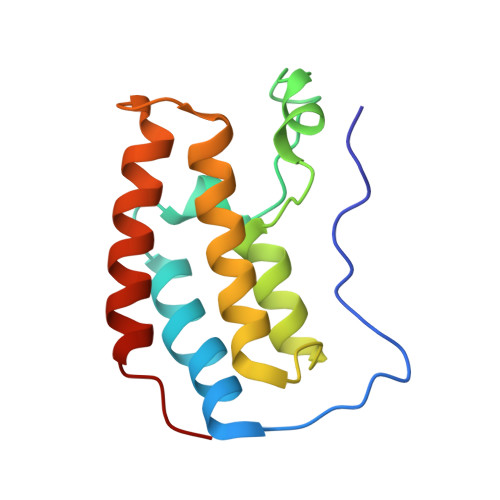4-Acyl Pyrrole Derivatives Yield Novel Vectors for Designing Inhibitors of the Acetyl-Lysine Recognition Site of BRD4(1).
Hugle, M., Lucas, X., Weitzel, G., Ostrovskyi, D., Breit, B., Gerhardt, S., Einsle, O., Gunther, S., Wohlwend, D.(2016) J Med Chem 59: 1518-1530
- PubMed: 26731611
- DOI: https://doi.org/10.1021/acs.jmedchem.5b01267
- Primary Citation of Related Structures:
5D24, 5D25, 5D26, 5D3H, 5D3J, 5D3L, 5D3N, 5D3P, 5D3R, 5D3S, 5D3T - PubMed Abstract:
Several human diseases, including cancer, show altered signaling pathways resulting from changes in the activity levels of epigenetic modulators. In the past few years, small-molecule inhibitors against specific modulators, including the bromodomain and extra-terminal (BET) bromodomain family of acetylation readers, have shown early promise in the treatment of the genetically defined midline carcinoma and hematopoietic malignancies. We have recently developed a novel potent inhibitor of BET proteins, 1 (XD14[ Angew. Chem., Int. Ed. 2013, 52, 14055]), which exerts a strong inhibitory potential on the proliferation of specific leukemia cell lines. In the study presented here, we designed analogues of 1 to study the potential of substitutions on the 4-acyl pyrrole backbone to occupy additional sites within the substrate recognition site of BRD4(1). The compounds were profiled using ITC, DSF, and X-ray crystallography. We could introduce several substitutions that address previously untargeted areas of the substrate recognition site. This work may substantially contribute to the development of therapeutics with increased target specificity against BRD4-related malignancies.
Organizational Affiliation:
Institut für Biochemie, Albert-Ludwigs-Universität Freiburg , Albertstrasse 21, D-79104 Freiburg, Germany.

















